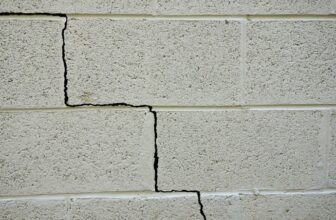
Dampness in the home is always a cause for serious concern since it is usually accompanied by a number of health risks and undesirable damages to the structure of a building. Thankfully the different types of damp can be prevented by adopting some of the building practices listed below.
Preventing rising damp
Rising damp typically occurs due to the upward capillary movement of groundwater through small cracks in either the masonry or brickwork of a building. Some building practices that can prevent rising damp include;
Membrane damp proofing
This involves installing a layer of water-repellent membrane material such as asphalt, bituminous felts, or plastic sheets. This membrane is typically placed between the main source of the dampness and the area of the structure adjacent to it. The membrane layer or Damp Proof Course (DPC) may also comprise of materials like cement concrete or polyethene sheets. The DPC can be placed vertically or horizontally in the floors and walls, depending on the source of the dampness. It is important to bear in mind that all DPC installations must be carried out by a trained damp specialist London after a proper survey must have been carried out.
Surface treatment
This treatment is done to fill up any pores present in the surfaces subjected to dampness. Some of the materials used in this treatment include; cement coatings, varnishes, bituminous solution, paints, and water-repellant metallic soaps like aluminium and calcium stearates and oleates. These materials are highly effective when it comes to protecting the structure against the damaging effects of heavy rain.
Preventing penetrating damp
This type of damp occurs when moisture moves through the walls, roof or below the ground area of a building. Some of the practices you can adopt to prevent penetrating damp include;
Cavity wall construction
This involves shielding the main wall of a building by placing an outer skin wall, thereby leaving a cavity in between the two walls. The purpose of this cavity is to prevent any moisture from traveling from the outer wall to the inner wall. An added advantage is that cavity walls tend to give better thermal insulation for your home than solid walls.
Rendering of outer walls
this practice can be used to prevent and counteract penetrating damp. During the process, a protective layer is usually applied to the outer walls of the structure. Rendering of outer walls should be done by professionals to ensure that the surface is adequately prepped before the rendering agent is applied. Also, if the wall has any cracks or fissures, they will need to be repaired before rendering can begin.
Preventing condensation
Effective insulation
proper insulation is a surefire way to prevent damp from entering your home. This can be achieved by sealing up any gaps or cracks in the structure. Also, all damages to gutters or roofing should be repaired immediately. Investing in windows and doors like double or triple glazing can also improve your home’s insulation.
Home ventilation systems
installing dehumidifiers, extractor fans/air vents, and condensation control units in condensation-prone areas like the bathrooms or kitchen is an excellent way to reduce the moisture levels in the home.
Conclusion
In the fight against dampness, prevention is always a better and less expensive alternative to treatment. By adopting the above building practices, you won’t have to deal with any damp issues in your home.




